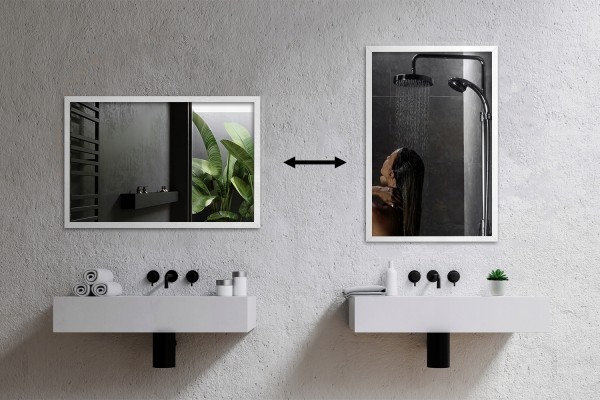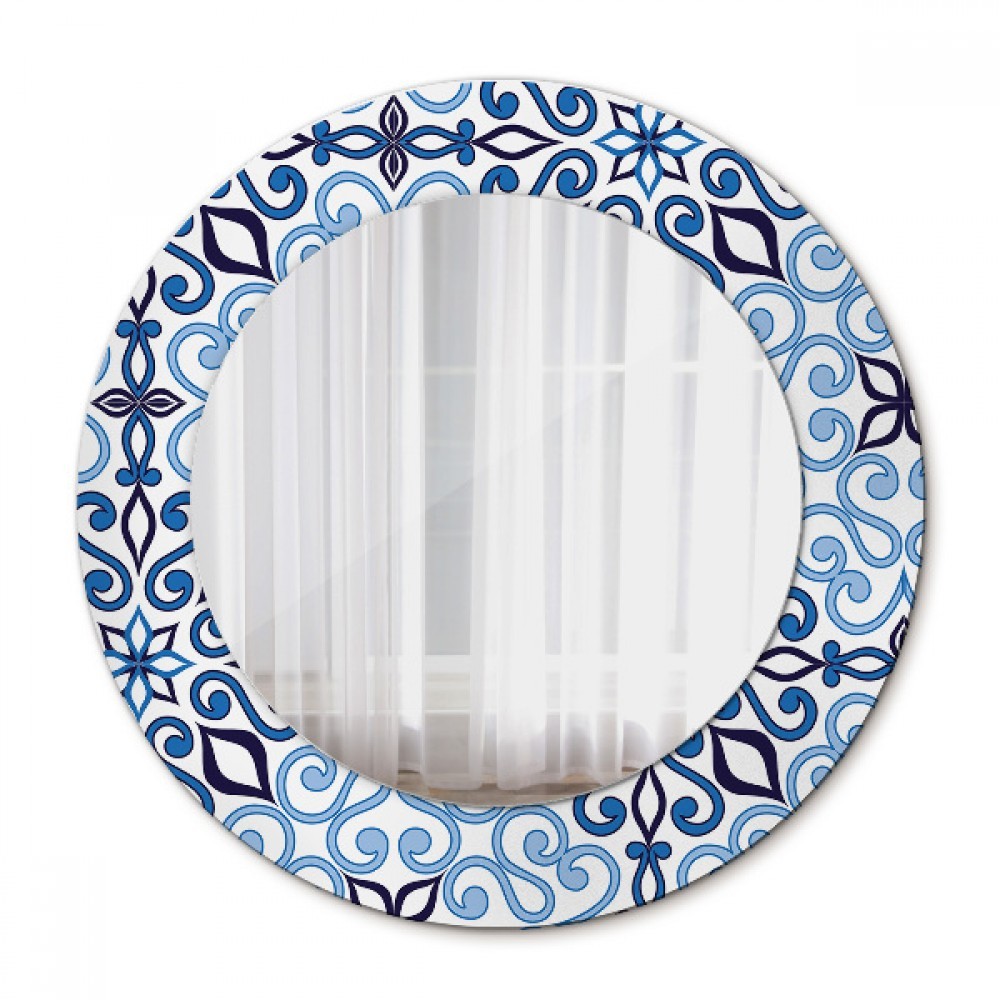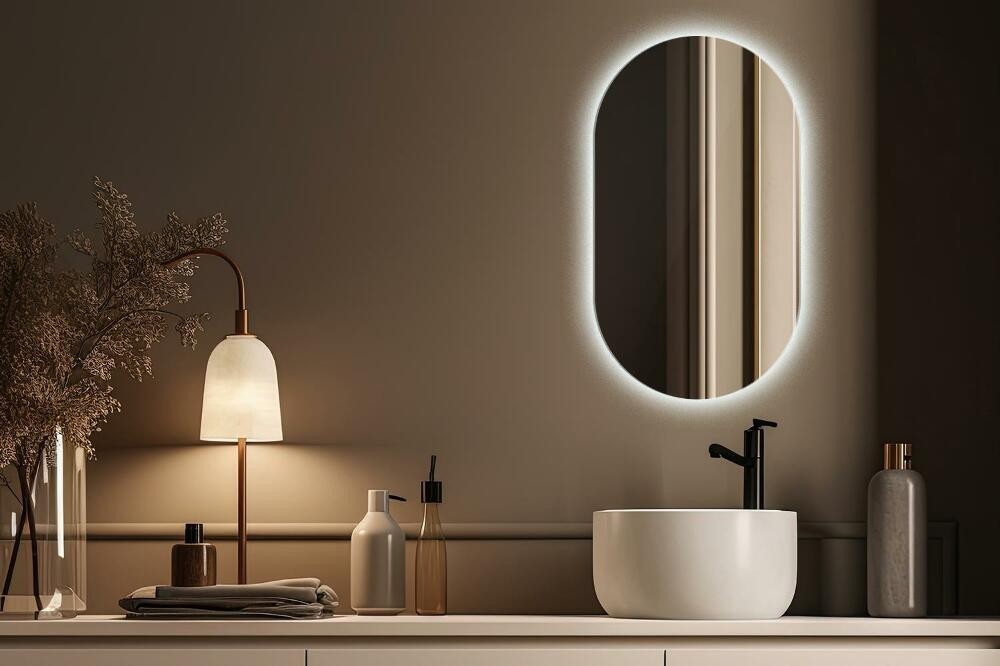Can there be two mirrors in the bathroom?
Two mirrors in the bathroom are not only a trend, but also a functional solution. Check when they work, how to choose them and how to avoid arrangement mistakes.

The mirror, known to mankind for thousands of years, is one of the most fascinating and versatile objects ever invented. Reflecting literally and figuratively, mirrors not only serve us to see our own reflection, but also play a key role in the development of culture, art and even technology. The history of mirrors is equally reflective of technological advances and changing aesthetic tastes over the centuries. In this article, we will look at when the mirror was invented, how it has evolved over the centuries and its importance in different historical periods.
The first mirrors as we know them were not made of glass, but of polished stones such as obsidian. Archaeologists have found that as early as around 6,000 BC, in areas of present-day Turkey, people used shiny, dark stones as primitive mirrors. However, these early examples were more decorative or ceremonial objects than an everyday tool for viewing reflections.
Over time, around 4,000 BC, in ancient Egypt and Mesopotamia, mirrors began to be made of metals - mainly bronze, polished to a high sheen. Such mirrors were expensive and a status symbol, available only to the wealthiest strata of society. Their form, although more refined than the stone prototypes, was still far from perfect in reflecting the image.
The breakthrough that occurred in the first century AD can be considered one of the key moments in the history of mirror technology. The technique of coating glass with a thin layer of metal not only opened up new possibilities in terms of the quality and efficiency of reflection, but also revolutionised the way people perceived their own reflection. This innovation made it possible to create mirrors that were lighter, safer and easier to transport than their heavy metal predecessors. The introduction of this technology also allowed mirrors to become more widely distributed, making them more accessible to a wider section of society, although they still remained luxury items.
During the Middle Ages, and particularly in 15th century Venice, the method was significantly refined, making the city a leader in mirror production. Venetian craftsmen achieved mastery in the production of mirrors, using a unique technique of tin-mercury amalgam, which allowed unparalleled quality and clarity of reflection. It was these mirrors, with their incomparable clarity and ability to reflect images with precision, that gained international fame and were exported to many European countries, being symbols of luxury and sophistication. Their production was surrounded by secrecy and their methods were passed down from generation to generation, further adding to their legend and prestige. Thus, glass mirrors, elevated to heights by Venetian masters, not only transformed the world of interior decoration, but also became an object of desire, a symbol of social status and proof of how advanced the technology of the era was.

Long an object of fascination and admiration, mirrors have found their special place in culture and art, pushing the boundaries of their original utilitarian use. During the Renaissance, when the individual and his or her experience began to take centre stage, mirrors acquired a new symbolic dimension. Artists such as Leonardo da Vinci, Jan van Eyck and Diego Velázquez used mirrors in their works to explore perspective, depth and the complexity of human existence. By introducing mirrors into their paintings, they not only achieved visual effects that were stunning in their realism, but also opened up new and previously unknown spaces for viewers to reflect on themselves and the world around them.
In literature and mythology, on the other hand, mirrors often appeared as powerful symbols that guided characters (and through them readers) towards a deeper understanding of themselves and the reality around them. Mirrors became a portal to other worlds, as in Lewis Carroll's Alice on the Other Side of the Mirror, an instrument of truth to expose falsehood, as in numerous fairy tales and legends, or they symbolised the pitfalls of one's vanity and obsession with beauty, as in the story of Snow White. This use of mirrors emphasised their ambiguity and multidimensionality, being a reflection of human desires, fears and quests. Whether used as a tool of introspection or as a metaphor for transience, mirrors in culture and art served a deeply human function - they were the mirror of the soul, reflecting both its beauty and its complex, sometimes dark nature.

The discovery of the silver deposition process on glass by Justus von Liebig in 1835 was a milestone that revolutionised the mirror industry. This method replaced difficult and dangerous techniques using mercury amalgams, opening the door to producing mirrors in a more efficient, safe and affordable way. The silver deposition process, which involves chemically depositing a thin layer of silver on a glass plate, has made it possible to create mirrors with unprecedented brightness and clarity of image. As a result, mirrors ceased to be luxury goods available only to the upper classes and became a common object that found its place in almost every home. This democratisation of mirrors had a profound effect on society, enabling a wider range of people to use mirrors on a daily basis, which in turn changed their perception of themselves and the reality around them.
As technology and science progressed, the mirror manufacturing process continued to evolve, and in the 20th century the next major innovation was the introduction of aluminium plating. This technique, which involved producing mirrors by depositing a thin layer of aluminium on glass in a vacuum, greatly improved the durability and resistance of mirrors and enabled them to be produced on an even larger scale. Aluminium-coated mirrors, thanks to their resistance to corrosion and their ability to maintain a high quality of reflection over a long period of time, have found applications not only in households, but also in industry, science and technology, for example in astronomical telescopes and optical instruments. This evolution from mercury to aluminium not only reflects advances in chemistry and material technology, but also shows how innovation can transform everyday objects, making them safer, more durable and more functional.

In today's world, mirrors are no longer just simple everyday objects, but have become an integral part of advanced technological and scientific systems, contributing to advances in many fields. From astronomical telescopes that expand our knowledge of the universe to precision optical instruments used in medicine and industry, mirrors play a key role. Modern manufacturing methods, such as the deposition of metal layers on glass in a vacuum, have not only increased the quality and durability of mirrors, but also made them more resistant to damage and weathering. In addition, the drive for more sustainability and concern for the environment has led to the development of production methods that minimise the negative impact on the ecosystem, making mirrors not only practical but also eco-friendly products.
On the other hand, the digital age and advances in electronics have opened up new horizons for the development of smart mirrors. Equipped with touchscreens, an internet connection and the ability to interact with other smart devices, these innovative devices represent a breakthrough in the way people use mirrors. Smart mirrors can be used not only for aesthetic purposes, but also as control centres for smart homes, information displays or personal health and fitness assistants, adapting content to individual users' needs. This combination of functionality and aesthetics opens up a wide range of applications, from bathrooms to fitness studios to luxury hotels, making mirrors an integral part of modern smart living.

In summary, the history of mirrors is equally reflective of the human quest to know ourselves and the world. From simple polished stones to high-tech smart mirrors, the evolution of this remarkable innovation is a testament to creativity and constant progress. Not only have mirrors changed the way we see ourselves, but they have also had an invaluable impact on the development of civilisation, culture and science.
Two mirrors in the bathroom are not only a trend, but also a functional solution. Check when they work, how to choose them and how to avoid arrangement mistakes.
Choosing the right mirror is crucial, as it can add character to a room, brighten a space or optically enlarge it.